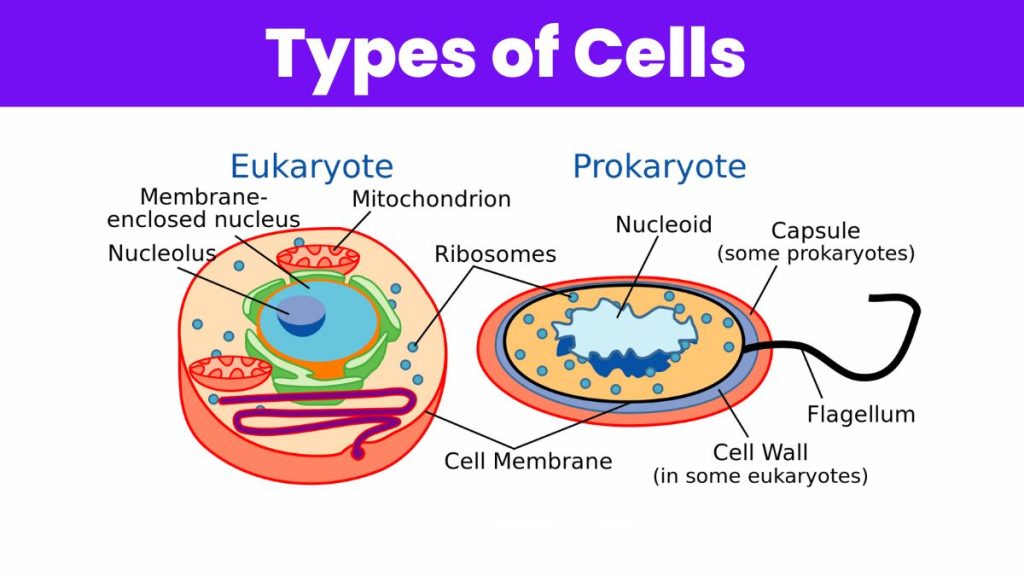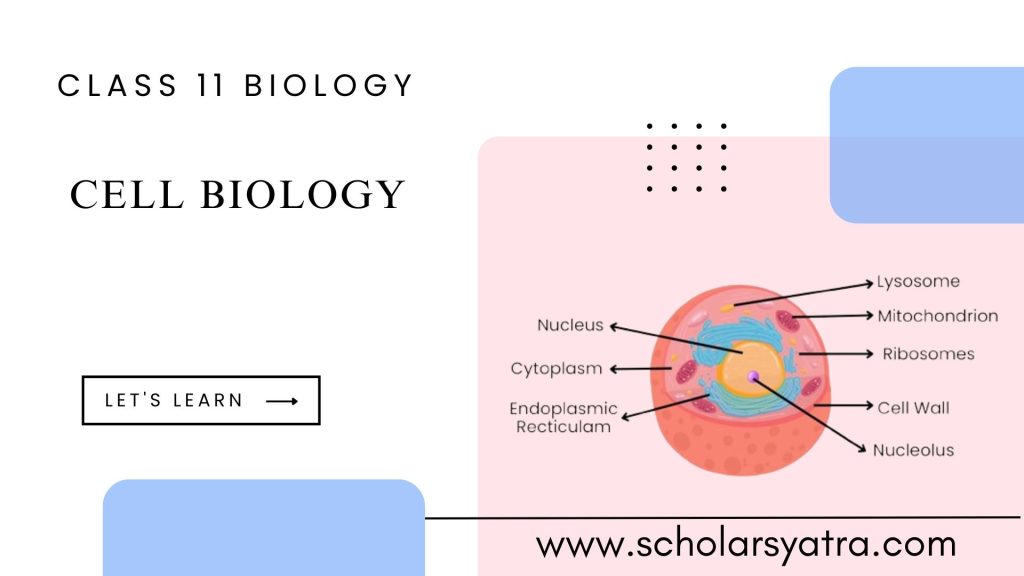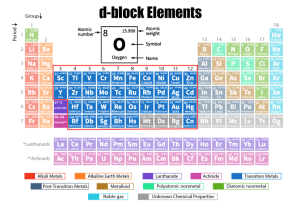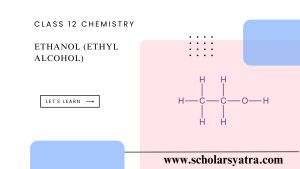A cell is the basic structural and functional unit of life, capable of performing all the processes necessary for life. The cell is often described as the basic unit of life—every living organism, whether a tiny bacterium or a massive tree, is made up of cells. Cells are capable of performing all necessary functions for life, such as growth, energy production, and reproduction. In this article, we’ll explore what cells are, the types of cells, their functions, and the structure of both prokaryotic and eukaryotic cells.
Table of Contents
ToggleIntroduction to Cells
Cells are the smallest structural and functional units of life. All living organisms are either single-celled (unicellular) or made up of many cells (multicellular). The term “cell” was first coined by Robert Hooke in 1665 when he observed cork tissue under a microscope. Over time, our understanding of cells has grown tremendously, leading to the development of the Cell Theory, which states:
3 parts of cell theory. They are:
- All living organisms are composed of one or more cells: This means that whether an organism is a single-celled bacterium or a complex multicellular organism like a human, it is made up of cells.
- The cell is the basic unit of structure and function in living organisms: Cells are the smallest entities that can carry out life processes, making them the fundamental units of life.
- All cells arise from pre-existing cells: Proposed by Rudolf Virchow, this principle counters the idea of spontaneous generation, affirming that new cells form only through the division of existing cells.
The Cell Theory revolutionized biology by providing a unified explanation of life at the cellular level, emphasizing that all organisms share a common cellular basis. This theory underpins our understanding of growth, development, and heredity in all living things.
Discovery of Cell
The discovery of the cell is a fundamental milestone in biology. The story began in 1665 when Robert Hooke, an English scientist, observed thin slices of cork under a primitive microscope. He noticed small, box-like structures and named them “cells” because they resembled the tiny rooms (or cella) in a monastery. However, Hooke was only viewing the cell walls of dead plant cells, as cork is made up of non-living tissue.
Further advancements came in the late 17th century, when Anton van Leeuwenhoek, a Dutch scientist, refined the microscope and became the first person to observe living cells, including bacteria and protozoa, which he called “animalcules.”
In the 19th century, two German scientists, Matthias Schleiden (a botanist) and Theodor Schwann (a zoologist), proposed that all plants and animals are made up of cells. This laid the foundation for the Cell Theory, which was later expanded by Rudolf Virchow to include the principle that “all cells arise from pre-existing cells.”
Types of Cells
Cells can be divided into two main categories based on their structure and complexity:

A. Prokaryotic Cells
Prokaryotic cells are simpler and smaller than eukaryotic cells. They do not have a nucleus or other membrane-bound organelles. Instead, their DNA is located in a region called the nucleoid. Prokaryotic cells are found in bacteria and archaea, which represent two of the three major domains of life. They can be further classified into various types based on their shape, metabolic properties, and environments in which they thrive. Examples include:
- Bacteria: Such as Escherichia coli (E. coli), which are often found in the intestines of humans and animals, and Streptococcus, which includes species that can cause strep throat.
- Archaea: Often found in extreme environments, such as hot springs and salt lakes, with examples including Halophiles (salt-loving) and Thermophiles (heat-loving).
Structure:
-
- Cell Wall: Provides protection and shape.
- Plasma Membrane: Controls the entry and exit of substances.
- Nucleoid Region: Contains circular DNA; it’s not enclosed by a membrane.
- Ribosomes: Make proteins.
- Flagella (in some): Help in movement.
Functions:
-
- Prokaryotic cells carry out all necessary functions, such as metabolism and reproduction, without needing specialized organelles.
- They reproduce mainly by binary fission, a simple asexual process.
B. Eukaryotic Cells
Eukaryotic cells are more complex and larger than prokaryotic cells. They contain a nucleus enclosed within membranes and numerous membrane-bound organelles such as mitochondria, endoplasmic reticulum, and Golgi apparatus, which perform specific functions within the cell. Eukaryotic cells are found in plants, animals, fungi, and protists. They can be classified into:
- Animal Cells: Lack cell walls and chloroplasts but have an extracellular matrix and centrioles. Examples include muscle cells and nerve cells.
- Plant Cells: Have cell walls made of cellulose, chloroplasts for photosynthesis, and large central vacuoles. Examples include leaf cells and root cells.
- Fungal Cells: Similar to plant cells but have cell walls made of chitin. Examples include yeast and mold cells.
- Protists: A diverse group of eukaryotic microorganisms, which are neither plants, animals, nor fungi. Examples include amoebae and paramecia.
Structure:
-
- Cell Wall (in plants and fungi): Provides structural support.
- Cell Membrane: Protects the cell and regulates the movement of substances.
- Nucleus: Stores genetic material and controls cell activities.
- Organelles: Mitochondria, endoplasmic reticulum, Golgi apparatus, etc., each with specialized functions.
Functions:
-
- Eukaryotic cells perform complex functions through specialized organelles. They can reproduce both sexually and asexually.
Differences between Prokaryotic and Eukaryotic Cells
| Feature | Prokaryotic Cells | Eukaryotic Cells |
|---|---|---|
| Size | Generally smaller (0.1-5 µm) | Larger (10-100 µm) |
| Nucleus | No true nucleus, DNA is in the nucleoid | True nucleus, enclosed by a nuclear membrane |
| DNA Structure | Circular DNA | Linear DNA chromosomes |
| Organelles | No membrane-bound organelles | Membrane-bound organelles (e.g., mitochondria, ER) |
| Cell Wall | Often present, made of peptidoglycan in bacteria | Present in plants and fungi, made of cellulose in plants and chitin in fungi; absent in animal cells |
| Ribosomes | Smaller (70S) | Larger (80S), except in mitochondria/chloroplasts (70S) |
| Cell Division | Binary fission | Mitosis or meiosis |
| Examples | Bacteria and Archaea | Plants, Animals, Fungi, Protists |
Structure of Eukaryotic Cells
The Structure of Eukaryotic cells has various organelles, each with a specific structure and function. Below, we explore each major part of a eukaryotic cell.
A. Cell Wall (in plants, fungi, and some protists)
- Composition: Made of cellulose in plants and chitin in fungi.
- Structure: A rigid, outer layer located outside the plasma membrane.
- Functions:
- Provides structural support and protection.
- Prevents excess water intake through osmosis.
B. Cell Membrane (Plasma Membrane)
- Composition: Phospholipid bilayer with embedded proteins and carbohydrates.
- Structure: Flexible, semi-permeable layer surrounding the cell.
- Functions:
- Regulates the entry and exit of substances.
- Facilitates communication between cells and their environment.
C. Cytoplasm
- Structure: A jelly-like substance that fills the cell and contains water, salts, and organic molecules.
- Functions:
- Provides a medium for chemical reactions.
- Supports and protects organelles within the cell.
D. Nucleus
- Structure:
- Nuclear Envelope: Double membrane enclosing the nucleus.
- Nucleolus: Small, dense region where ribosomes are assembled.
- Chromatin: DNA and protein complex that condenses into chromosomes during cell division.
- Functions:
- Stores genetic information.
- Controls cell activities by regulating gene expression.
E. Mitochondria
- Structure: Bean-shaped with a double membrane and inner folds called cristae.
- Functions:
- Known as the “powerhouse of the cell,” it generates energy in the form of ATP through cellular respiration.
F. Endoplasmic Reticulum (ER)
- Types:
- Rough ER: Studded with ribosomes; synthesizes proteins.
- Smooth ER: Lacks ribosomes; synthesizes lipids and detoxifies chemicals.
- Structure: Network of membranous tubules and sacs.
- Functions:
- Rough ER: Produces and transports proteins.
- Smooth ER: Produces lipids and detoxifies harmful substances.
G. Golgi Apparatus
- Structure: Stacked, membrane-bound sacs known as cisternae.
- Functions:
- Modifies, packages, and sorts proteins and lipids for distribution.
- Produces lysosomes and other vesicles.
H. Lysosomes
- Structure: Membrane-bound vesicles filled with digestive enzymes.
- Functions:
- Breaks down cellular waste, damaged organelles, and pathogens.
- Plays a role in cell maintenance and recycling.
I. Ribosomes
- Structure: Composed of rRNA and proteins; can be free in the cytoplasm or attached to the rough ER.
- Functions:
- Site of protein synthesis; translates mRNA into polypeptides.
J. Plastids (in plant cells)
- Types:
- Chloroplasts: Contain chlorophyll and perform photosynthesis.
- Chromoplasts: Contain pigments that give color to flowers and fruits.
- Leucoplasts: Store nutrients like starch.
- Structure: Double membrane with their own DNA.
- Functions:
- Chloroplasts: Produce food (glucose) through photosynthesis.
- Chromoplasts and Leucoplasts: Storage of nutrients and pigments.
K. Vacuoles
- Structure: Membrane-bound sacs; large central vacuole in plant cells.
- Functions:
- Stores water, nutrients, and waste products.
- Maintains turgor pressure in plant cells for structural support.
L. Cilia and Flagella
- Structure: Made of microtubules arranged in a “9+2” pattern.
- Functions:
- Cilia: Small, hair-like structures that move substances over the cell surface.
- Flagella: Longer structures used for cell movement (e.g., sperm cell movement).
M. Cell Inclusions
- Structure: Non-living substances, such as glycogen granules, lipid droplets, pigments, and crystals.
- Functions:
- Serve as storage materials or provide mechanical support to cells.
Functions of Eukaryotic Cells
Eukaryotic cells, being complex, perform a variety of functions necessary for growth, survival, and reproduction. Some key functions include:
- Metabolism: Conversion of nutrients into energy and building blocks for growth.
- Protein Synthesis: Ribosomes synthesize proteins that perform vital cellular functions.
- Cell Communication: Membrane proteins allow cells to communicate and coordinate activities with each other.
- Reproduction: Eukaryotic cells can reproduce through mitosis (for growth and repair) or meiosis (for sexual reproduction).
- Energy Production: Mitochondria generate ATP, providing energy for cellular activities.







